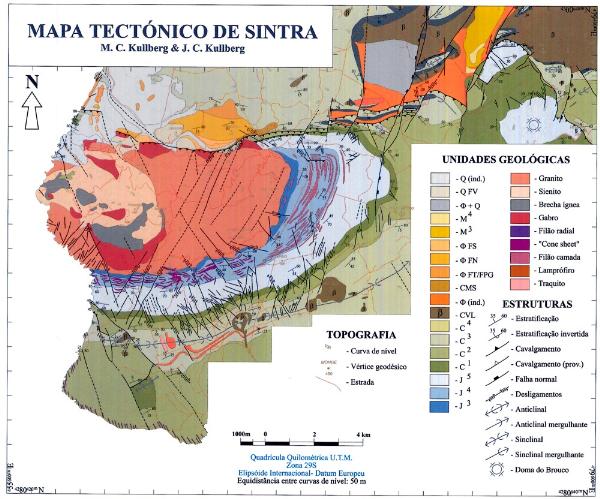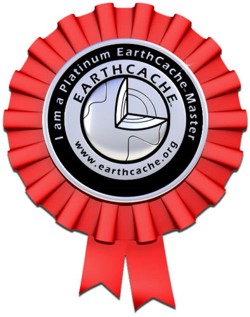From the guidelines, as from January 2013: "People do not need to wait for permission to log your EarthCache. Requiring someone to wait is not supported by the EarthCache guidelines. People should send their logging task answers to you, then log your EarthCache. When you review their logging task answers, if there is a problem, you should contact them to resolve it. If there is no problem, then their log simply stands."

TRAPPED! A story of a lonely xenolith.
In order to understand this story you first have to get to grips with the term "Xenolith".
 What is a xenolith? Simply put a xenolith is a rock fragment which becomes enveloped in a larger rock during the latter's development and hardening (see the adjacent image). In geology, the term xenolith is almost exclusively used to describe inclusions in igneous rock during magma emplacement and eruption. Xenoliths may be engulfed along the margins of a magma chamber, torn loose from the walls of an erupting lava conduit or explosive diatreme or picked up along the base of a flowing lava on Earth's surface.
What is a xenolith? Simply put a xenolith is a rock fragment which becomes enveloped in a larger rock during the latter's development and hardening (see the adjacent image). In geology, the term xenolith is almost exclusively used to describe inclusions in igneous rock during magma emplacement and eruption. Xenoliths may be engulfed along the margins of a magma chamber, torn loose from the walls of an erupting lava conduit or explosive diatreme or picked up along the base of a flowing lava on Earth's surface.
Around 90 million years ago, in the Upper Cretaceous period, a body of less dense granitic magma ascended through the existing Jurassic lithologies (essentially limestones) and solidified creating what is now known as the Sintra Massif or batholith. It is a circular intrusion that is made up of a central syenitic ring surrounded by an outer, large, granitic ring and a discontinuous outer gabbro-diorite ring that is better exposed in the south.
This disposition reflects the installation of two distinct diapirs: the first of granitic composition with crustal affinities and the second of gabbro-syenite composition with mantle affinities occupying the nucleus of the first diapir (see the geological map) and you've all been there to see this at Cabo da Roca.

As a result of the emplacement of this set of diapirs the originally flat-lying limestones of Jurassic age were angled upwards and in places they actually overturned. A further result of this upheaval at 90 million years were the emplacement of some spectacular dykes with some very complex geometry as well as the breaking off of pieces of limestone that fell into the hot magmatic mixture. These pieces were eventually trapped within the coolling magma retaining their original characteristics.
The EarthCache
This EarthCache takes to observe one of these lonely xenoliths trapped during the ascention of this magmatic diapir.
- 1. How long is the xenolith before you? (I want the long axis measurement please).
- Would you class its shape as oval, square or rectangular?
Note:
1- NO pictures of the feature in question in any of the logs. Inclusion of spoilers will result in log deletion.
E-mail the answers through my profile to validate your find.
 References:
References:
Note: This EC has been created using the referrenced EC's nearby that were created by me.

A EarthCache
Para se habilitarem a mais um found, respondam às seguintes perguntas:
1- Qual o comprimento do xenólito?
2- Classificarias a forma do xenólito como, quadrada, oval ou rectangular?
Enviem-me as respostas via o meu profile para validarem o found.
Note: Platinum EarthCache level "ribbon" courtesy of Play mobil.

 The most exciting way to learn about the Earth and its processes is to get into the outdoors and experience it first-hand. Visiting an Earthcache is a great outdoor activity the whole family can enjoy. An Earthcache is a special place that people can visit to learn about a unique geoscience feature or aspect of our Earth. Earthcaches include a set of educational notes and the details about where to find the location (latitude and longitude). Visitors to Earthcaches can see how our planet has been shaped by geological processes, how we manage the resources and how scientists gather evidence to learn about the Earth. To find out more click HERE.
The most exciting way to learn about the Earth and its processes is to get into the outdoors and experience it first-hand. Visiting an Earthcache is a great outdoor activity the whole family can enjoy. An Earthcache is a special place that people can visit to learn about a unique geoscience feature or aspect of our Earth. Earthcaches include a set of educational notes and the details about where to find the location (latitude and longitude). Visitors to Earthcaches can see how our planet has been shaped by geological processes, how we manage the resources and how scientists gather evidence to learn about the Earth. To find out more click HERE.
